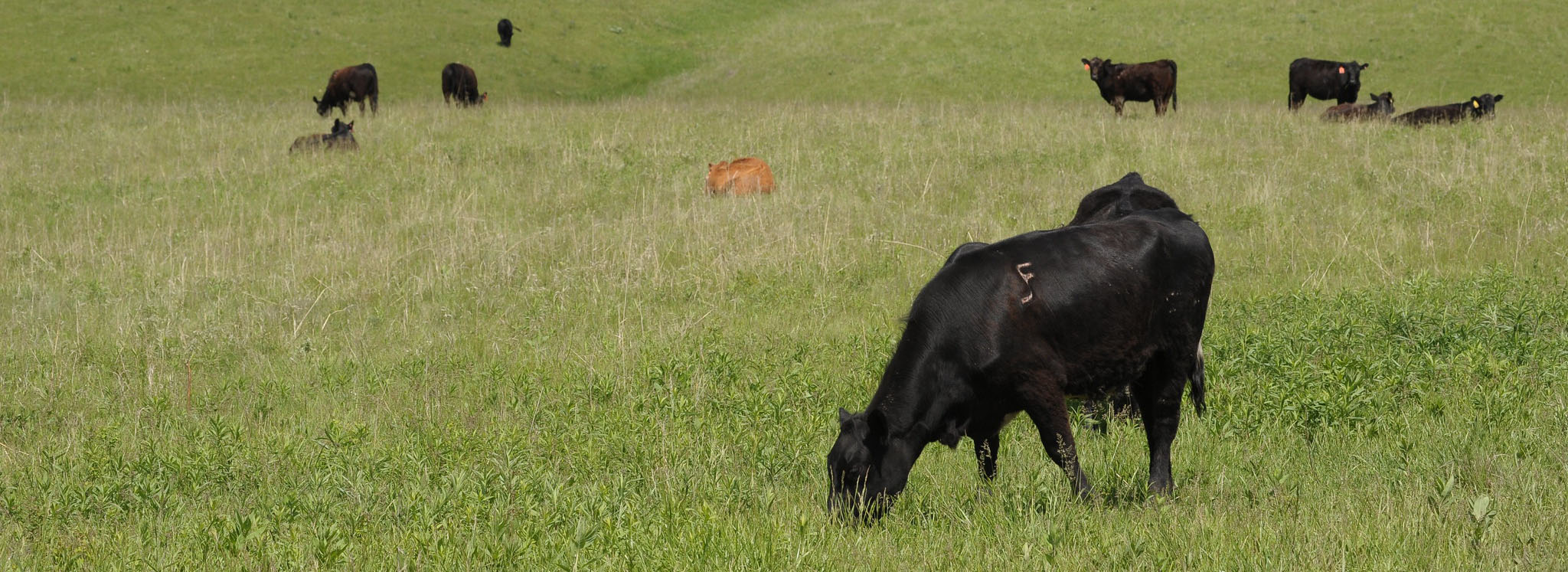
K-State veterinarian Brad White says most people consider a body condition score of five to six as optimal. | Download photo
Cattle Chat: Body condition scoring
K-State cattle experts discuss how to correctly body condition score beef animals
At a glance: K-State beef cattle experts Brad White and Phillip Lancaster explain the body condition scoring process for cattle, physical indicators and general information about the system.
More information: Brad White, 785-532-4243, bwhite@vet.k-state.edu; Phillip Lancaster, 785-532-6323, palancaster@vet.k-state.edu
Related: Beef Cattle Institute Cattle Chat
August 6, 2024
By Jacob Klaudt, K-State Research and Extension news service
MANHATTAN, Kan. – Body mass index allows people to evaluate their physical health by measuring body fat using a weight-to-height ratio. In a similar fashion, cattle producers employ the body condition scoring system to gauge an animal’s nutritional status.
Beef cattle experts at Kansas State University recently outlined how to score cattle for new and young ranchers on an episode of Cattle Chat, noting this practice started similarly to its human equivalent.
“A body condition score is a producer’s way of visually assessing how much body fat, or flesh, a cow has,” K-State beef cattle nutritionist Phillip Lancaster said.
“When this practice started, they did look at weight relative to size – kind of like BMI in people. Then it migrated to a visual assessment system, so people did not have to measure body weights.”
Determining an animal’s nutritional well-being with a body condition score aids producers in appraising how an individual’s body currently functions from a reproductive standpoint.
To start the body condition scoring process off right, Lancaster advises rancher to look at "key anatomical structures".
“Study their ribs,” he said. “Then ask yourself, ‘How many ribs are visible?’ If they have a winter hair coat, that can get a little tricky and tough to see.”
“Next, look above the flank area at the spine’s transverse processes coming out of the vertebrae. ‘Is that flesh on their back dipping down or coming straight across?’ That is the next thing I would think about,” K-State veterinarian Brad White said.
Producers often assign a lower body condition score to cattle displaying multiple ribs and spinal processes. Another area that affects an animal’s score include the hip and brisket.
“Looking at an animal from behind, they should assess how much their hook and pin bones protrude,” Lancaster said.
The beef cattle body condition scoring system ranges from 1 to 9. Scorers designate emaciated animals with a one, and obese cattle with a nine.
“In that pelvis region, I also like looking at their tail head. If there is a nice indentation and you don't see any fat – after looking at other physical characteristics – I would think an animal may be closer to a four,” he said.
“When you start to see little rolls of fat, then I start pondering if that individual is at a six or seven because we shouldn't see excessive fat pones (lumps of fat above the pin bones) in that area – especially on a cow in production.”
Lancaster and White recommend consulting the Guide to Body Condition Scoring Beef Cows and Bulls before making management decisions for those unfamiliar with this system.
To hear the full discussion, listen to Cattle Chat on your preferred streaming platform.
***

K‑State Research and Extension is a short name for the Kansas State University Agricultural Experiment Station and Cooperative Extension Service, a program designed to generate and distribute useful knowledge for the well‑being of Kansans. Supported by county, state, federal and private funds, the program has county extension offices, experiment fields, area extension offices and regional research centers statewide. Its headquarters is on the K‑State campus in Manhattan. For more information, visit www.ksre.ksu.edu. K-State Research and Extension is an equal opportunity provider and employer.